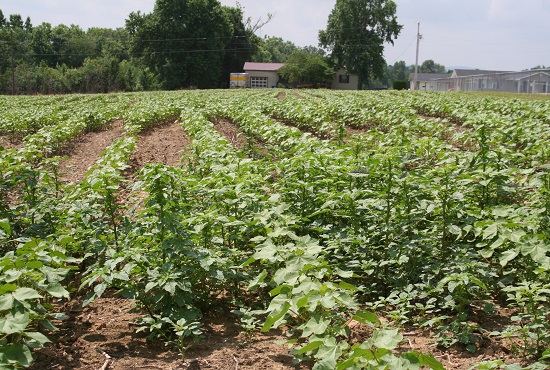Quantifying Quality
Quality, efficiency and innovation are the key traits that have allowed the Australian cotton industry to ride out not only the worst drought in 100 years, but also the worst financial crisis the world has seen since the Great Depression.
Thanks to better breeding and agronomic practices, average Australian cotton yields have risen to 2000 kg/ha (just under 4 bales/acre) in recent years.
So despite the drought, markedly improved efficiencies have allowed Australia to maintain reasonable production levels — providing access and presence in key markets. And when it does rain again, we are confident that production will return to pre-drought levels of above 3 million bales.
Meanwhile, associated quality improvements are now seeing more than 75 percent of the crop producing 1-5/32” staple and better, with increasing volumes of 1-1/4” being produced from upland crops.
Boost Staple Strength
The Australian Cotton Shippers Association believes further seed breeding developments, and the release of higher-yielding elite quality varieties should see a substantially increased proportion of the crop producing staple of 1-7/32” and longer cotton in coming years.
With anticipated improvements to production levels, and continued enhancement of Australian cotton quality, ACSA has recognized a key opportunity in the “higher end” upland market for production of 50 Ne through 80 Ne yarns.
For the last two seasons, ACSA — together with the Cotton Research and Development Corporation, Cotton Seed Distributors, and the Commonwealth Scientific and Industrial Research Organisation (CSIRO) — has been selecting elite quality lines and running commercial spinning and weaving trials to better understand the textile performance of some of our new seed varieties. Trials have been conducted in India, Thailand and China. While it is still early, the results have been excellent.
Hosiery and weaving yarn (ringspun/combed) of between 50 Ne and 60 Ne has been successfully produced, as well as 70 Ne compact combed weaving yarn. Uster statistics show yarn strength, evenness, and level of imperfections with the finished product have been excellent.
Selling Points
The quality of this cotton and the yarn it produces speaks for itself — creating the key selling points of Australian cotton for the spinning sector.
The next step for us is to define the intangible attributes of cotton that help to sell our product once it reaches the department store shelf. Ultimately, we need to identify what drives consumers to buy cotton products over other textiles — things such as comfort, health considerations and the natural feel of our fibre.
And as the world becomes more “carbon savvy,” understanding and communicating the limited footprint our fibre makes on the world will hopefully be a selling point over synthetic products.
From an Australian point of view, we believe our efficiency gains, quality improvements and strong track record in environmental management hold us in good stead for this next step. The challenge is to quantify it.








